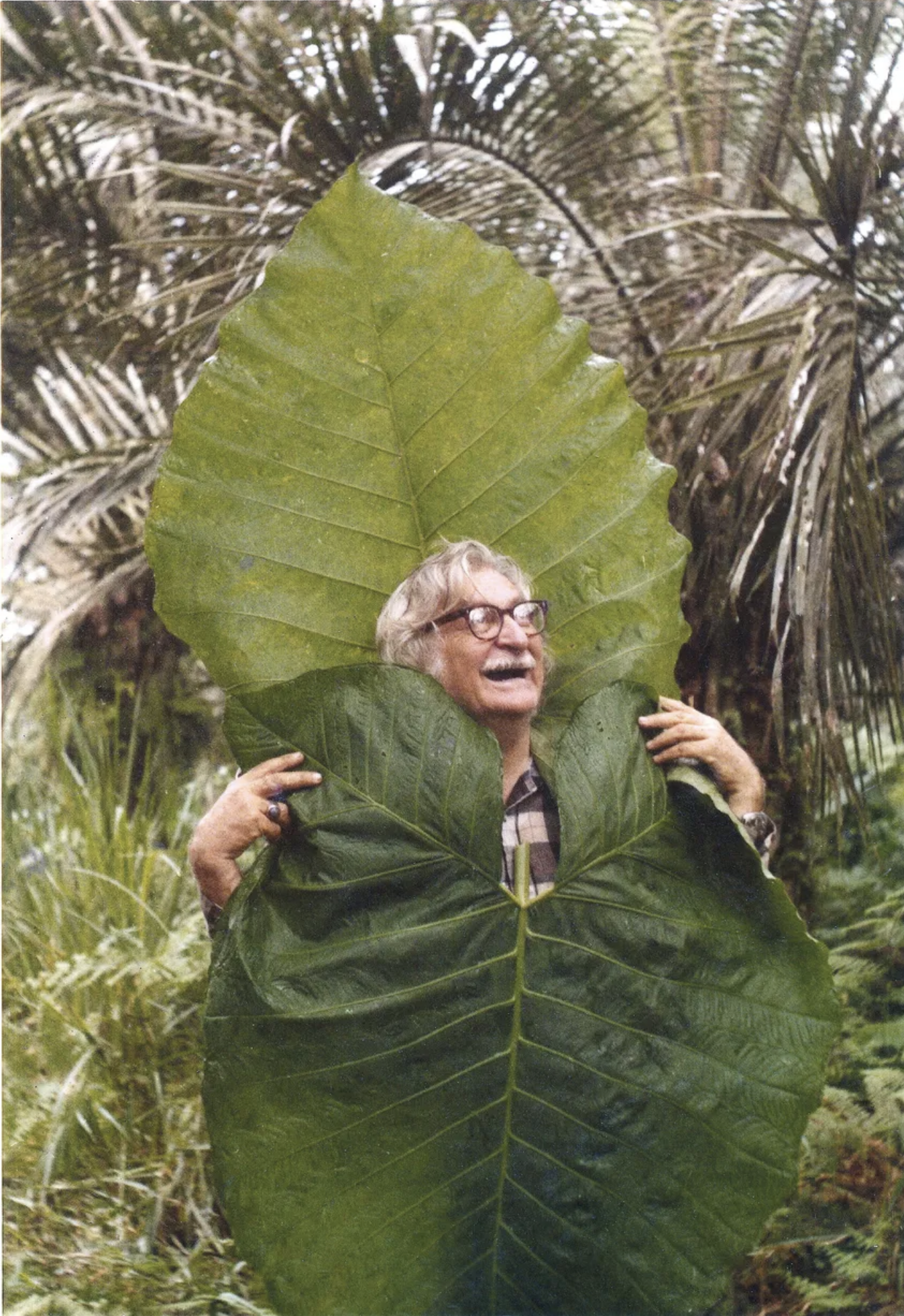Roberto Burle Marx (1909-1994) was a prolific Brazilian artist whose innovative approach to landscape architecture revolutionised the field. Burle Marx introduced modernist landscape architecture to Brazil and established himself as one of the most influential landscape architects of the 20th century.

His designs were characterized by the use of bold, colourful and textural plant compositions. He was particularly drawn to tropical plants such as bromeliads, palm trees, and banana trees. Burle Marx believed that plants were as important as the buildings they surrounded and that they could create a sense of place and identity.
His style reflects the changing cultural and artistic landscape of Brazil which was facing a period of rapid modernization, and it was even more important to establish a distinct Brazilian identity that was separate from European influences.
He is a complete artist: a painter, printmaker, sculptor, set designer, jewellery designer, musician, and craftsman, but it was his work as a landscape architect that earned him global recognition. He designed more than 2,000 gardens throughout his lifetime, each of them unique and celebrated for their creativity and originality:
One of Burle Marx’s most significant contributions to landscape architecture was his rejection of European styles and his incorporation of Brazilian plants and culture into his designs. He was a pioneer in using plants from the Brazilian Cerrado and Caatinga biomes, which were previously considered unsuitable for landscaping. By doing so, Burle Marx established a sense of place in his gardens and promoted a “Brazilian-ness” that was previously absent from the field of landscape architecture.
Burle Marx’s most iconic projects include the landscape design of the Boardwalk of Copacabana in Rio de Janeiro, the Parque do Flamengo, and the Praça dos Cristais in Brasília. He also designed the gardens of the Ministry of Education and Health in Rio de Janeiro, now known as the Gustavo Capanema Palace, which was a pioneering example of modern architecture in Brazil. His work was not limited to Brazil, and he designed landscapes in The New York Botanical Garden in the United States, the Parque del Este in Venezuela, and Europe.





Burle Marx’s legacy continues to inspire landscape architects and designers worldwide. His work represents a significant shift in the way we think about landscape architecture, emphasizing the importance of plants, culture, and identity. His innovative use of Brazilian plants and his commitment to sustainability continue to influence the field of landscape architecture today.
As a garden designer, I would love to be able to take inspiration from his career. His innovative use of Brazilian plants, rejection of European styles, and commitment to sustainability represent a significant shift in the way I think about landscape architecture.
More of his gardens to explore:
- Praça dos Cristais – Brasília
- Sitio Roberto Burle Marx – Rio de Janeiro
- New York Botanical Garden
- Edifício Gustavo Capanema Garden – Rio de Janeiro
- Euclides da Cunha – Recife
- Parque del Este – Venezuela
- Pampulha Airport Garden – Belo Horizonte
- MAM Gardens – Rio de Janeiro
- Eixo Monumental -Brasília
- Parque Ipanema – Ipatinga

When admiring Burle’s professional trajectory I find myself thinking about how art and design create an interesting interconnection: When designing a garden, what is expected from us as a result of a project is not only a beautiful but also one that offers well-being, leisure, and happiness, for example, feelings that are subjective and very tricky to measure. There is therefore a fine line between garden design and art that this artist manages to navigate naturally which makes him a revolutionary in the landscape field and my main inspiration as a professional.
If you’re as inspired by the work of Burle Marx as I am and want to see more of my own garden design work, be sure to follow me on Instagram @kanieman. Let’s keep the conversation going and continue to explore the fascinating world of garden design together!


Leave a Reply